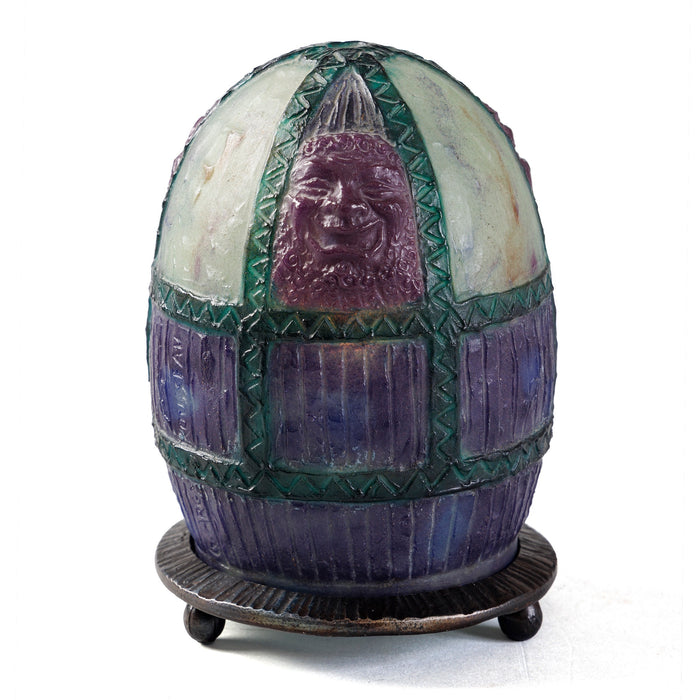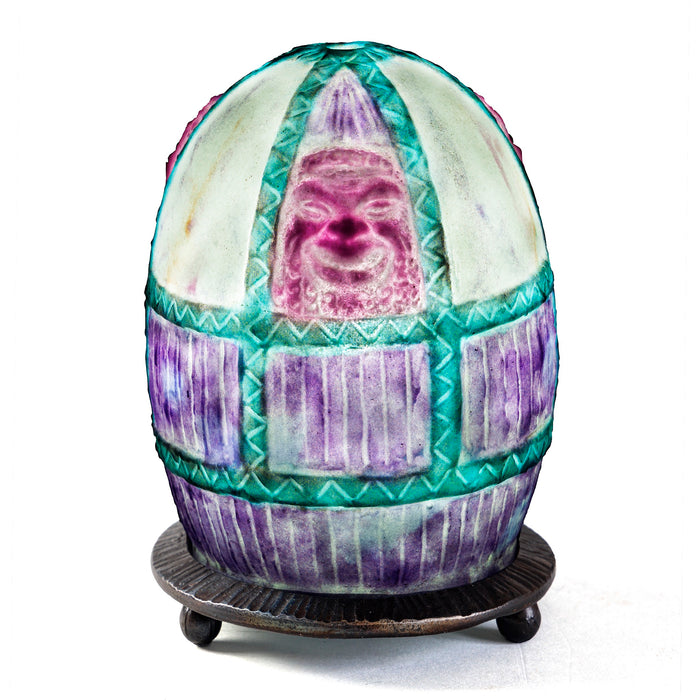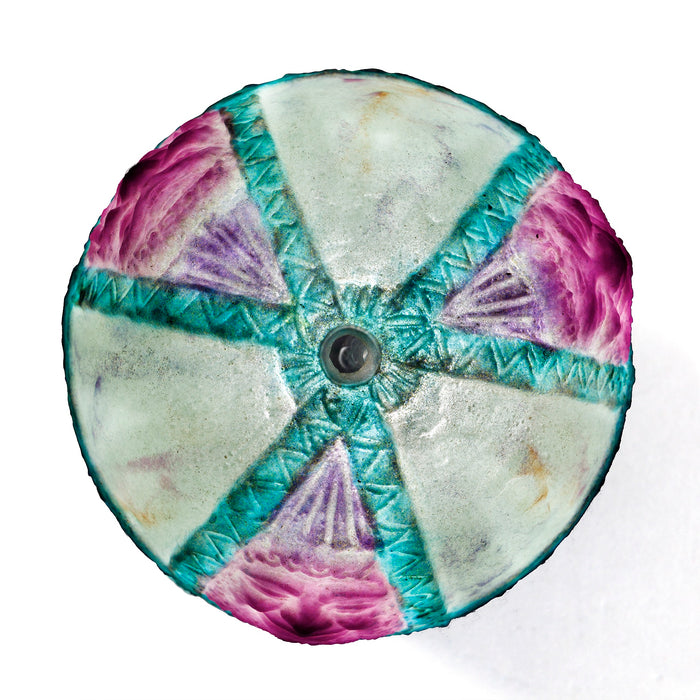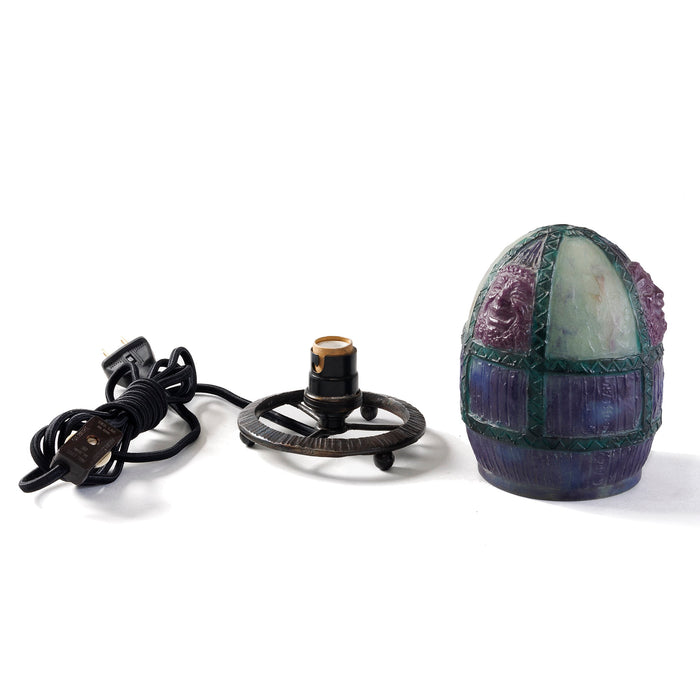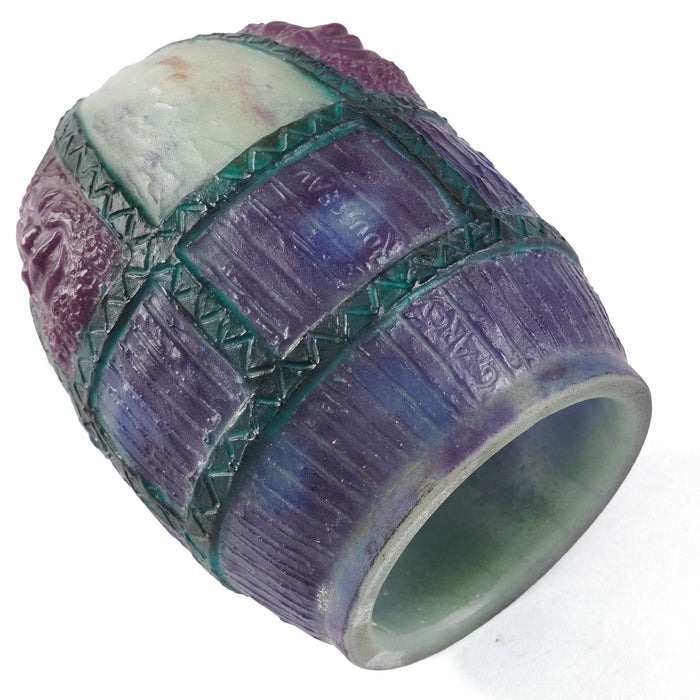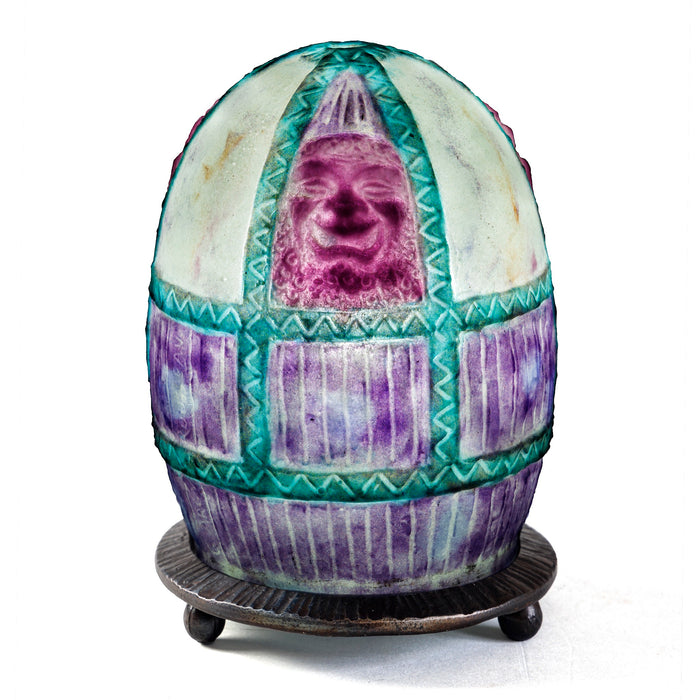
Gabriel Argy-Rousseau Pâte de Verre "Masques" Night Light
$11,500
An Art Deco night light made of pâte de verre glass by Gabriel Argy-Rousseau. Three comedic masks in purple hues and cast deep relief decorate the upper band of this oblong lamp, while the smoky bottom sections featured water-color like splotches of amethyst powdered glass. Comedic masks, known as thalia, were worn by old man characters in many comedies of the 300s BC and later. Such characters often have a wide grin, furrowed brow and balding head. Separating the work into segments are thick bands in green with simple patterning in a "zig-zag" motif, an exciting counterbalance to the rigid striations that make up the ornament on the lower two tiers of the lamp's shade.
- Product Details
- Curator's Notes
Item #: YEL-21271
Artist: Gabriel Argy-Rousseau
Country: France
Circa: 1923
Dimensions: 5.5" height, 4.375" diameter.
Materials: Pâte de verre, translucent glass, Wrought Iron
Signed: “G. Argy-Rousseau” and “France”
Literature: Similar lamp pictured in Les Pâtes de Verre G. Argy-Rousseau Catalogue Raisonné, J. Bloch-Dermont, Paris, 1990, p. 100 and p. 192 , no. 23.12
Gabriel Rousseau adopted the suffix 'Argy' in honor of his wife Marianne Argyriadès. She was his best friend's sister. They all shared a love of Greco-Roman and Egyptian antiquity. Argy-Rousseau was interested in many things, studied at the École de Sèvres, but also completed an engineering degree. Throughout his life, he conducted research in areas as diverse as dental porcelain and color photography. In his private life he always surrounded himself with creative personalities, including Henri Cros, who had long been known for his glass works using the 'pâte-de-verre' technique. Argy-Rousseau began to work successfully with the material even before the First World War, after the war he founded a glass factory that had 20 employees at its peak. He developed his own technique for producing his ideas: Argy-Rousseau first modeled his sketched idea in plaster, which was then covered with wax. A refractory hollow mold consisting of several parts was then molded from this model in several work steps. He even produced his own glass. It was crushed into powder and colored by the addition of metal oxides. With the help of fine brushes, the now liquid glass mass, which had been washed several times, was applied precisely to the walls of the refractory mould. Two more layers followed, one after the other, to create strength and at the same time prevent air bubbles from forming. The last layer was resin to further fix the pate de verre. The model was then placed upside down in a wood-fired oven, where the piece was then fired at high temperatures. After cooling, the mold was removed, the now solid object cleaned with acid and the last bumps polished off with a wheel. This is how these wonderful, transparent, at the same time colorful, delicate-looking objects came into being.

